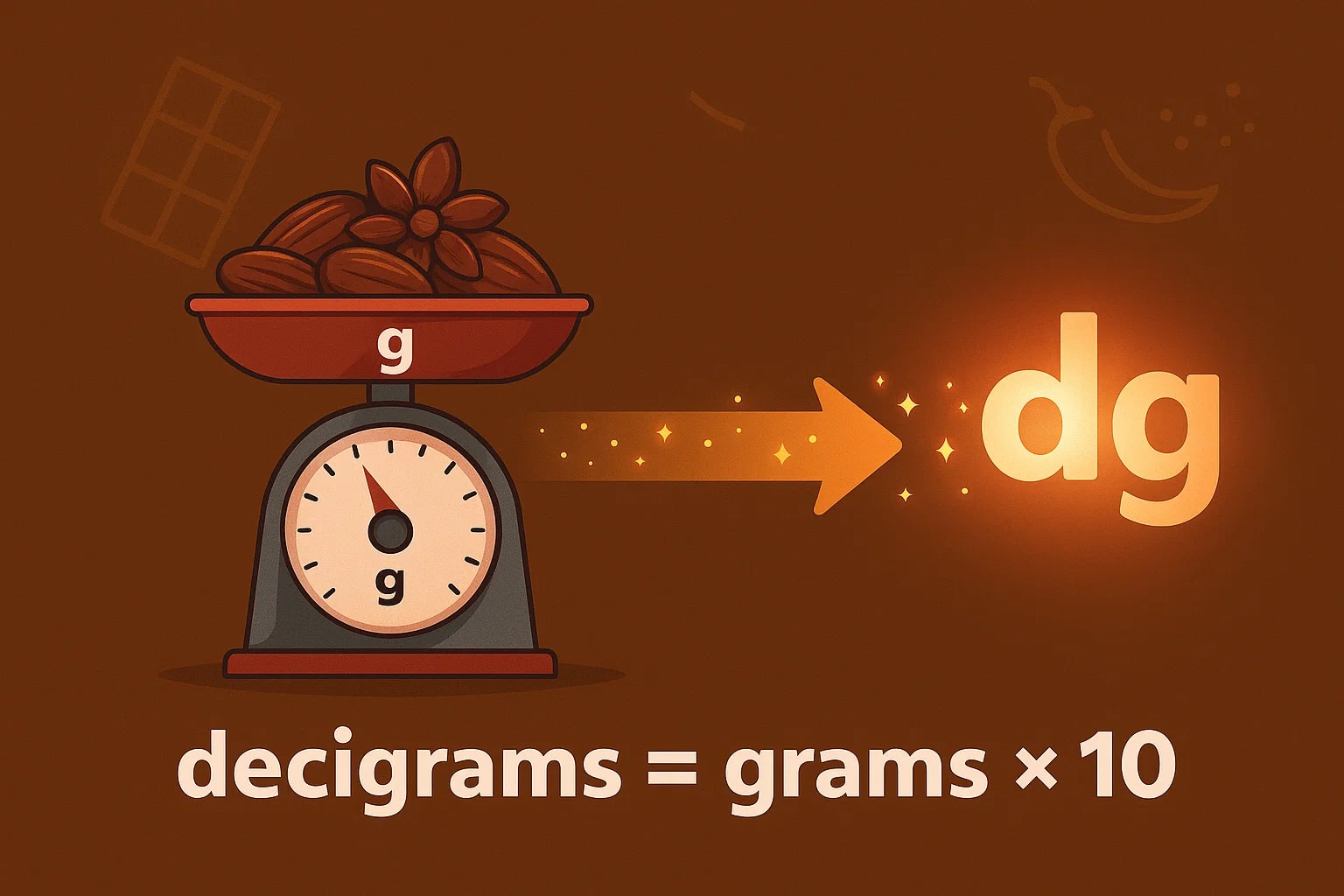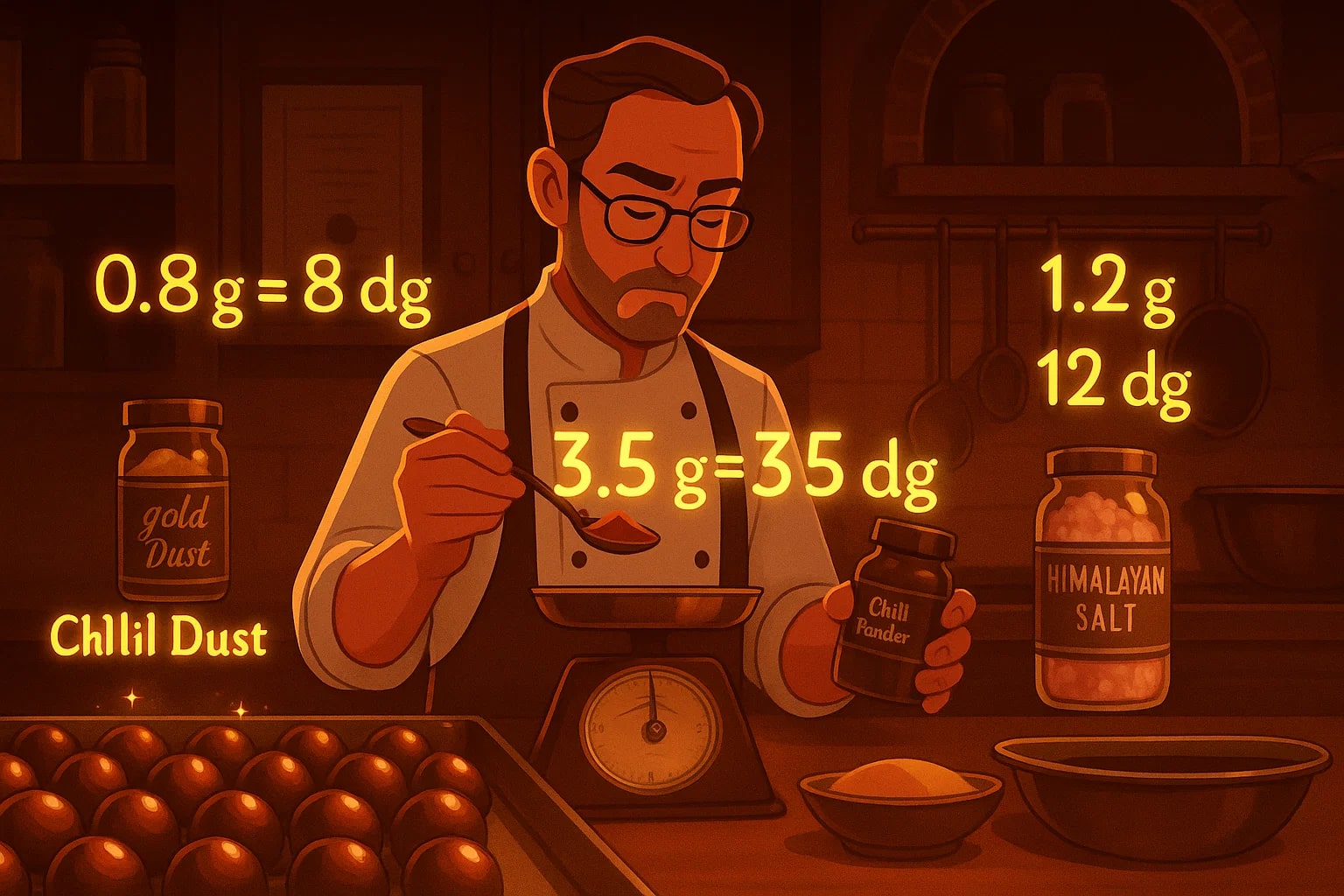gram to decigram – How to convert g to dg
The gram to decigram conversion is simple in math, but in professional kitchens, science labs, and craft workshops, it’s a crucial step for precision. Moving between g and dg helps control portion sizes, ensure recipe balance, and maintain consistent quality.
What is a Gram (g)?
A gram is the base metric unit of mass.1 g = 10 dg
It’s widely used for everyday weights, from groceries to lab chemicals, offering a good balance of precision and ease.
What is a Decigram (dg)?
A decigram is one-tenth of a gram:1 dg = 0.1 g
This unit is perfect when grams are too coarse for accurate work but milligrams are more detail than needed. In cooking, jewelry making, and pharmaceuticals, decigrams bridge the gap.
How to convert gram to decigram
The formula is:
decigrams = grams × 10
Example: A cocoa powder portion of 15 g equals 15 × 10 = 150 dg.
The reverse conversion is:
grams = decigrams ÷ 10
Example: A decorative sugar portion of 75 dg equals 75 ÷ 10 = 7.5 g.

From grams to decigrams and other weight scales, our Weight Converter delivers quick results. Check Conversion Tools for more unit converters.
Do you know?
-
Gram fact: The gram was officially defined in 1795 during the French Revolution to unify measurement standards across the country.
-
Decigram fact: In medical dosing, decigrams are sometimes used to express amounts of powdered medication for quicker reading and fewer decimal points.
The Artisan Chocolate Maker: Precision in Every Bite
In the polished kitchen of a luxury chocolate boutique, the head chocolatier prepared a new batch of spiced truffles. The base recipe was recorded in grams for the main ingredients — cocoa, sugar, cream — but the final touches called for exquisite precision.
The chili powder that gave the truffles their signature warmth was too potent to be measured in whole grams without over-flavoring. Instead, the chocolatier switched to decigrams. For one tray of truffles, exactly 3.5 g — or 35 dg — of chili powder struck the perfect balance between heat and sweetness.
This approach repeated across ingredients: 0.8 g (8 dg) of edible gold dust for decoration, 1.2 g (12 dg) of Himalayan salt flakes for a contrasting crunch. Working in decigrams allowed the chocolatier to scale recipes up or down without losing the delicate flavor balance that defined the brand.
When the truffles were unveiled in the boutique’s glass display, customers tasted the result of that precision in every bite. Behind the scenes, gram to decigram conversions had quietly ensured the flavors were flawless.

Measured to Perfection
The jump from grams to decigrams might seem small, but in culinary artistry and other precision fields, it’s a leap toward better control. By translating a base recipe into decigrams, professionals can fine-tune their work without guesswork. Whether in chocolate making, pharmaceuticals, or design, every perfect result starts with accurate numbers.

